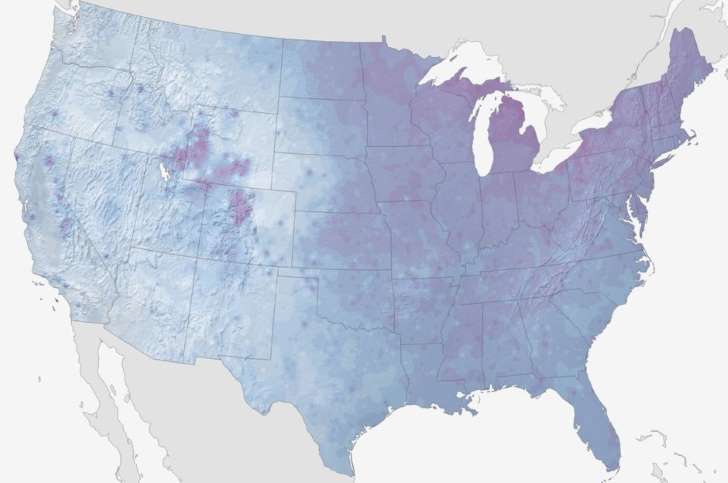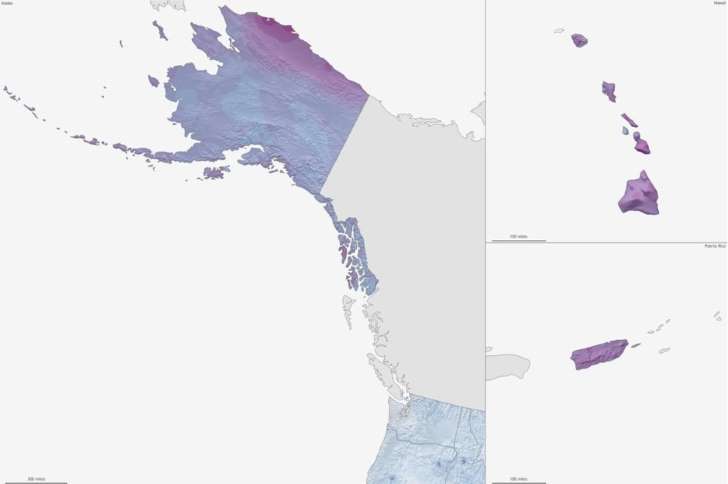December 8, 2015
If, for whatever reason, you just really love to see your own breath, what would be the best time of year to step outside?
The answer lies in these NOAA maps of the 50 U.S. states and Puerto Rico, showing the average dates for the coldest day of the year in white (early December) to baby-blue (mid-January) to eggplant (late March). Here’s the key:
First, the contiguous U.S.:
December 8, 2015
If, for whatever reason, you just really love to see your own breath, what would be the best time of year to step outside?
The answer lies in these NOAA maps of the 50 U.S. states and Puerto Rico, showing the average dates for the coldest day of the year in white (early December) to baby-blue (mid-January) to eggplant (late March). Here’s the key:
First, the contiguous U.S.:

Now all the rest:

The maps, based on the 1981-2010 U.S. Climate Normals, are an update to a 2014 version that frankly had a weird and confusing color scheme. These more-palatable images are better at conveying the data in the climate normals—in this case, the most likely day with the lowest minimum temperature based on three decades of local weather records.
A couple interesting tidbits: Frigidness seems to wash from the western part of the country to the east like a slow, slushy wave. February and March are a fine time to experience northern Alaska’s biting wonder and a lousy time to swim in Puerto Rico, as that’s when the mercury typically drops the most. And mainland Americans who fly to Hawaii to escape the chill of late-winter/early-spring are doing it wrong, as that’s also the time of the islands’ worst weather. (It’s much nicer to go after mid-April.)
NOAA explains more:
Historically, the western half of the Lower 48 has its coldest day in December, near the beginning of winter. In contrast, most eastern locations have their coldest day in January. In addition, areas that average the most snow cover, such as the Northeast and high-altitude regions in the West, tend to reach their climatological coldest day much later in the winter, likely because snow reflects much more sunlight than bare ground. Other conditions being equal, the more sunlight the ground reflects, the less solar heating the location experiences.
Courtesy: CityLab
















































































































